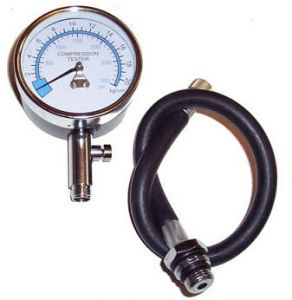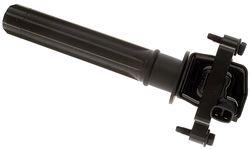How to Test Engine Compression
An engine depends on an equal compression in each cylinder to run smoothly. If poor compression exits in one or more cylinders it can cause a rough idle condition and low power. A compression test can be performed to check wear or internal damage. A compression gauge is needed to test the engine cylinders. There are two types of gauge styles, one threads into the spark plug hole which is more accurate. The other style of gauge is constructed with a rubber plug that is meant to be pressed against the spark plug hole, this style of gauge is difficult to use. To perform a engine cylinder compression test follow the steps below.
Remove ignition coil connector or ignition system or fuel pump fuse to disable power to the ignition or fuel system
Test ignition system to ensure that the power to the system has been disabled
Remove #1 cylinder spark plug and insert compression gauge, most gauges have a hose attachment that is installed into the spark plug hole with the gauge connecting to the gauge hose.

Engine Cylinder Compression Gauge
After the compression gauge has been inserted, use the starter to crank the engine over for about five seconds. Use about the same five seconds to test the remaining cylinders.
Record the compression reading as each cylinder is tested
Remove the compression gauge and reinsert the spark plug
Follow this procedure until all cylinders have been tested
Compare cylinders compression reading, typical compression readings are between 125 p.s.i. and 160 p.s.i. all cylinder readings should be within about 5% of each other.
If low compression exists a cylinder malfunction exits and further inspection is required. Possible causes for a low compression condition are: burned intake or exhaust valve, broken piston or piston ring, broken valve spring or a blown head gasket.
.
Tuesday, March 24th, 2009 AT 6:19 PM




